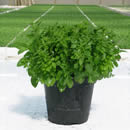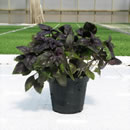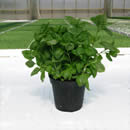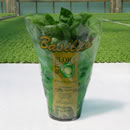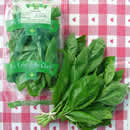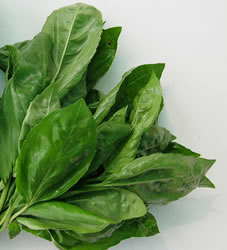Basil
Dill
Absinthe
Basil
Borage
Calamint
Capers
Chervil
Coriander
Tarragon
Chives
Wild fennel
Lavender
Lovage
Lippia Citriodora
Marjoram
Lemon balm
Mint
Myrtle
Oregano
Chilli pepper
Salad burnet
Parsley
Rosemary
Garden rocket
Rue
Sage
Celery
Thyme
Valerian
HISTORICAL HINTS:
The term “Basil” comes from the Greek word basilikon, standing for “royal plant”, and its use in so many different contexts, from cooking to medicine, had always been of great consideration among ancient populations. The Asian populations begun to grow basil certainly before others and were soon followed by Gaulish who considered it as a sacred plant; only those who had followed the purification ritual were allowed to touch its leaves and to harvest it. Egyptians, instead, used basil to prepare embalming ointment. In Roman culture, beside cooking purposes (Apicio included basil in his recipes), basil was frequently used for its medical properties to treat wounds. According to Pliny the Elder, its leaves have a strong aphrodisiac power and for this reason it became the symbol of lovers.
In Medieval times, on the contrary, basil became symbol of hatred. In the Decameron, Boccaccio counts the story of Elisabeth from Messina who buried the head of his lover in a basil pot. In India the basil plant is sacred so it cannot be eaten, while in France, as in Ancient Greece, basil has a royal name, in fact, herbe royale.
THE PLANT -
Ociuum Basilicum, commonly called basil, is an annual aromatic plant native to tropical Asia that can also reach 20 to 60 cm of height. Basil plant has oval pointed leaves of a brilliant green in the upper part and green-grey in the underside: younger leaves are certainly the best as regard as smell and taste.
PROPERTIES –
As a medical herb, leaves and the flowered top of the plant are used to prepare infusions with sedative, antispastic, diuretic, antimicrobic and anti-inflammatory properties. Basil is also used against indigestion and as a vermifugal. If used as a mouthwash, it is suitable to relieve oral inflammations. Its oil is used to massage aching or rheumatic body parts. In India basil is used as a supplementary treatment against stress, asthma and diabetes.
CULINARY USE –
Basil is the main ingredient of Genovese pesto, the typical sauce of liguirian cuisine, together with pine kernel and olive oil. As aromatic herb, it is used for salads, with mature tomatoes, zucchinis, garlic, seafood, fish (red mullet), scrambled eggs, chicken, rabbit meat, duck, rice salads, soups, pasta and sauces (tomato sauce, vinaigrette). It is not suitable to combine basil with other aromatic herbs such parsley, thyme and rosemary.
VARIETIES –
• Genovese Basil: typical liguirian variety widely used for Genovese pesto.
• Neapolitan Basil: lettuce or medium leave with ragged edges; it smells like Genovese variety but it is slightly more mentholated.
• Small leave Basil (or minimum): very common in local markets, its lemon like taste and its intense smell is perfect for cooking (pistou soup, sauces). It originates in Chile probably.
• Purple Ruffles: name deriving from its sweet smell, purple decorative leaves and light pink flowers; it is used in salads or as a decoration.
• Thai Basil (or Thyrsiflorum Siam Queen): its smell reminds us of mint and clove and it is commonly used with seafood and exotic soups.
• Cinnamon Basil: also called Mexican basil with a strong smell of cinnamon and purple flowers.
• Greek ball basil (or small): slightly elongated small leaves, round compact shaped, very fragrant, pervasive and piquant aroma, used as a decorative plant, in turkey it is even used as centre-piece on restaurants and cafes' tables. It is also used as mosquitoes repellent (our grandfathers used to rub basil against exposed skin in order to avoid bites with very good results).
• Cardinal Basil: with its particularly pleasant aroma, and its purple-whitish flowers, it is used in Spanish cuisine, and it is very decorative. It is very resistant to bad weather.
CULTIVATION – Despite basil requires a warm and sunny Mediterranean or tropical climate, it can be also cultivated in temperate climate countries, both in pot and in soil. It suffers cold and do not resist to temperature under 10°C. At least 5 hours/day of sunlight are necessary. The period between July and August is the best to harvest leaves which can be refrigerated, but as our catchphrase cites “fresh is better”. A fresh and well drained soil is recommended. Basil plant must be regularly pruned, removing the vegetative top and flowers to allow a flourishing growth and to extend the life-cycle that, otherwise, would end with the flowering and the subsequent fruiting. Growing slows down and eventually stops on flowering stalks; the stem becomes woody and the essential oil production decreases, but seeds can be used the following year.























